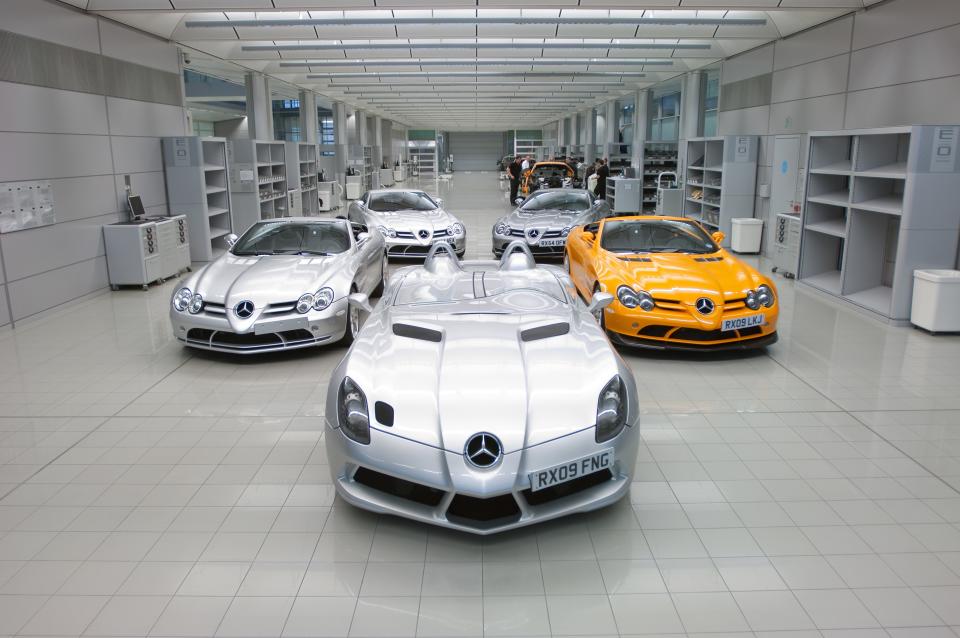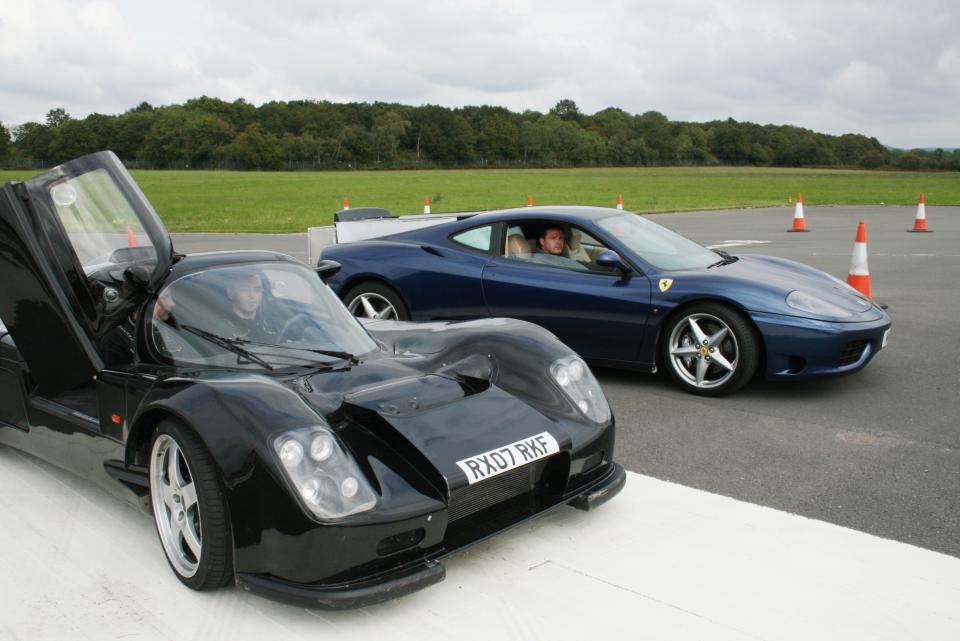McLaren Automotive Secretly Used These Two Ferraris to Develop Its First Car
To understand how McLaren's road car division was born and why they had to buy two Ferraris (and an Ultima) to make the MP4-12C happen, I believe we need to go back as far as the F1.
If you're keen to know why nobody at McLaren could afford to sleep right before the Christmas of 1992, read about their 'Lost Weekend'. In a nutshell, the mission was to make F1 XP1 move on its own before Santa would let everybody go home. Gordon Murray's team succeeded, but to get there in less than two years, McLaren had to purchase a pair of mark3 Ultima GTRs from Noble Motorsport, as they had no platform in house to base their mules on.
Fast forward to 2007, and Ron Dennis found his company to be in the same position.
McLaren only built one production F1 in late 1993, and finished the last road car in 1998 after a run of 106 all together, plus a spare chassis. By that time, their Formula 1 cars had Mercedes power for the second season running, with Daimler owning a stake in McLaren as well. And when the Germans wanted to build a front-engined supercar "for high net worth individuals around the world,, Woking's engineering expertise came in very handy.
After showing a concept at the 1999 Detroit Auto Show, the 207 mph Mercedes-Benz SLR McLaren entered production in 2003, with the bodies and the supercharged 626 horsepower 5.4 AMG V8s arriving from Germany, but the engineering and production carried out in England.
The SLR was a beast in every respect, but despite having a whopping 575 foot-pounds of torque (and even more later), it wasn't the car McLaren would have built on its own. As one of their engineers described it to me quite recently, "the SLR goes like a rocket-powered locomotive in a straight line and sounds absolutely fantastic, but its brakes will melt and it won't corner because it's just too heavy." No wonder why McLaren Special Operations came up with their own upgrade package for the car after it was out of production and their partnership with Mercedes-Benz has ended on all fronts.

It's hard to tell when Ron Dennis realized that the love affair with Mercedes will only last for a short decade, but former Mercedes boss Eckhard Cordes putting any further collaboration projects on hold in late 2004 might have been the clue. Three years later, McLaren had running mules of its own, long before Dennis could purchase back Daimler's stake in 2010, just in time for the launch of McLaren Automotive.
In 2007, the press had no idea what McLaren's next car would look like, nor what engine they'd jam in the middle of it. And while spies did mention seeing a suspicious Ferrari 360 around Woking, nobody had a picture to prove that Ron Dennis' engineers are indeed building a Ferrari competitor using mules based on Ferrari's hardware. But given that the front-engined SLR was no good for the job, sourcing two 360s and an Ultima was the logical step forward. And here they are:

The McLaren MP4-12C debuted September 9th, 2009, while McLaren Automotive was officially launched on March 18th, 2010.
A day before Ron Dennis could explain what they're all about, the company published a video, showing off their spectacular £300m Technology Center and taking us through the MP4-12C's development process with the always brilliant Chris Goodwin.
The car made its dynamic debut at the Goodwood Festival of Speed in July, and once McLaren was done spending another £50 million on its new Production Centre with a capacity to build around 4000 cars a year, the 12C entered production for the 2011 model year.
While the press had a go in a few pre-production cars in January in Portugal, Ron Dennis started talking about how they need to pay back that £800 million investment to their shareholders as they were expanding their dealer network and coming up with new products.
The MP4-12C was renamed 12C in 2012, only to get discontinued in early 2014 once the McLaren 650S hit the scene. Woking originally intended to keep both in production, but since the 650S is a 12C upgraded with 25 percent new parts, the customers chose the new breed over McLaren Automotive's first model, the car developed with Ferraris to beat Ferraris.

McLaren sold 1,654 cars to customers across 30 markets in 2015, and is planning to double that figure this year. The job of chopping up Ferraris landed on Honda's desk.
You Might Also Like

 Yahoo Autos
Yahoo Autos 